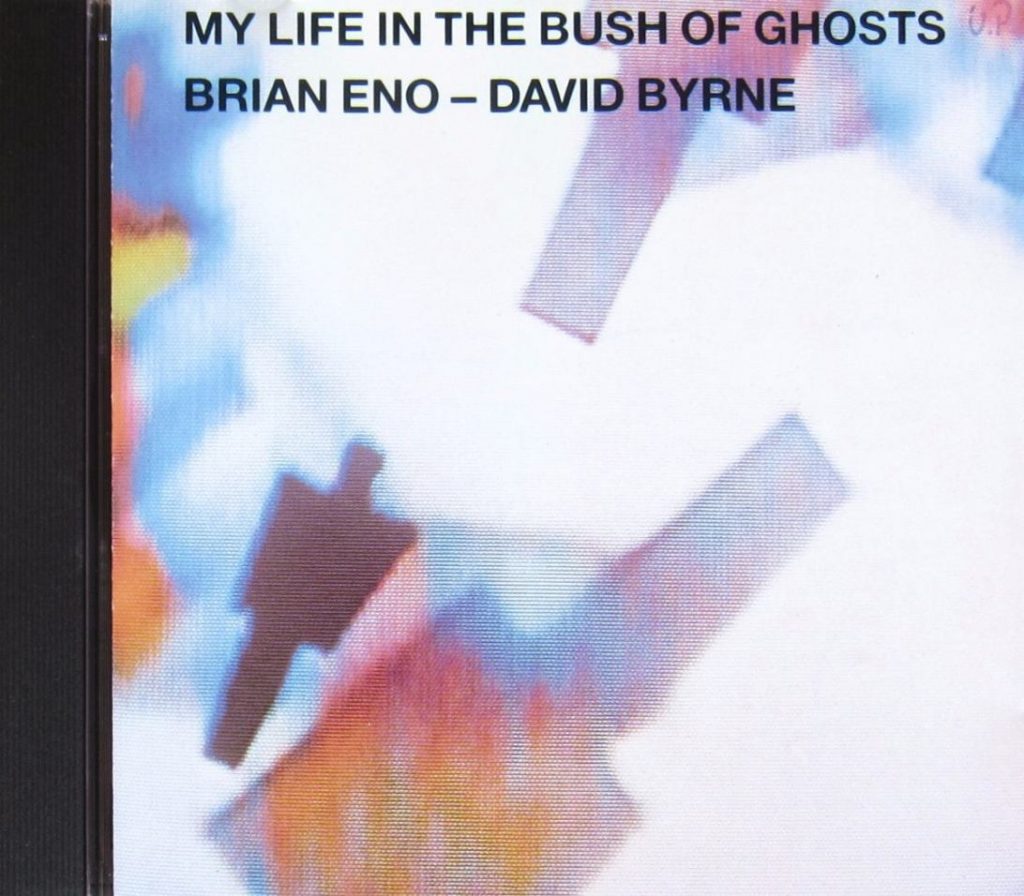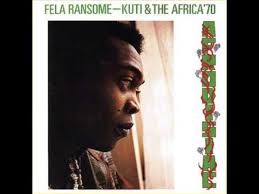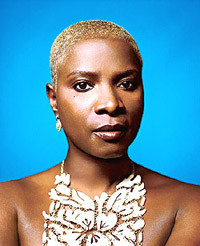by Marshall Bowden
There were charges of cultural appropriation in the air when Talking Heads fourth album, Remain In Light, was released in 1980, charges that seemed to intensify when lead singer David Byrne and producer Brian Eno released My Life in the Bush of Ghosts, a collaboration that in many ways fueled Remain in Light. Remain In Light benefited from a looser, funkier approach that was explored by the band’s married rhythm section, bassist Tina Weymouth and drummer Chris Frantz. It was the first album released due to legal issues with sampling rights that kept Bush of Ghosts unreleased until 1981.
While Byrne and Eno’s record was acknowledged as technologically and sonically groundbreaking (or at least on the cutting edge of what was happening elsewhere) there was still a lot of unease with the idea of sampling, of taking the music and rhythms of other cultures and artists out of context. It’s an argument at least as old as the advent of recorded music. Byrne was forthcoming about what he considered to be the origins of the band’s new sound and direction, but that didn’t stop critics like Rolling Stones‘ Jon Pareles from leveling charges of appropriation:
“What’s the difference between using evangelists’ rhetoric as lyrics (for “Once in a Lifetime” on Talking Heads’ Remain in Light) and using the voice of New Orleans preacher Reverend Paul Morton in “Help Me Somebody”? Plenty. “Once in a Lifetime” is obviously Byrne’s creation, complete on its own terms. “Help Me Somebody” is a falsified ritual, with its development truncated and its rhythm deformed. A pseudodocument, it teases us by being “real.” Even more annoying is “The Jezebel Spirit,” which utilizes a recorded exorcism. Byrne and Eno latch onto the rhythm of the exorcist’s dry laugh for the backup, but they fade out before we find out what happened to the possessed woman — which would have been a lot more interesting than the chattery band track. Blasphemy is beside the point: Byrne and Eno have trivialized the event.”
[https://www.rollingstone.com/music/music-album-reviews/my-life-in-the-bush-of-ghosts-252823/ ]
It didn’t help that Byrne and Eno named their record after the novel by Nigerian writer Amos Tutuola and then admitted that they had never read it. I distinctly recall Remain In Light being referred to by many as Talking Heads’ ‘funk album’. At the time I was a student at Boston’s Berklee College of Music and I remember a conversation with two African American musicians. One of them told me flat out that Remain In Light was NOT funk, it did not have the requisite elements of funk music. The second musician disagreed, saying that yes, this record was definitely based on American funk music. “But,” said the first one, “it’s not like the stuff we grew up on. It’s not Parliament.”
And it most definitely is not like Parliament. Because Byrne and Eno also applied a strong Afrobeat influence to the music on Remain in Light, mostly Nigerian music in the style popularized by Fela Kuti. The idea, musically, is all there when you listen to any of Kuti’s albums. As an example, listen to the opening track of Fela’s Afrodisiac album ‘Alu Jon Jonki Jon’, and note the swirling guitar riffs and repetitive horns bubbling away while some electric piano offers a somewhat psychedelic flavor. Or the tight guitar loop rhythm that kicks off “Zombie”. Or any of a hundred other Fela tracks.
Reportedly, one of the albums that Eno played for David Byrne when they met during a 1977 Talking Heads tour in England was Afrodisiac, and it sounds very much like the musical touchstone that informs so much of Remain In Light.
Another thing that Byrne discussed in interviews promoting Remain In Light is that the vocal lines of the album were also conceived in terms of African music. Byrne and Eno layer the vocals by having there be essentially three vocal voices: the narrator or main singer, which is Byrne, the chorus, who comment on what the singer says and provide a counter-line to the main vocal, and finally backup singers who essentially provide the equivalent of doo-wops and other sounds, both melodic and rhythmic. These three vocal parts are notated in different fonts on the album’s lyric sheet.
Lyrically, Remain In Light has always been a bit interesting. The songs reflect a feeling of anxiety at the dawn of the Reagan era and a feeling of paranoia and urban claustrophobia that was evident on Talking Heads’ third album, the Eno-produced Fear of Music. They presage the rise of social media and the influence of the internet on self-image and of isolation. While the album has a lot of celebratory moments and a sense of community in the layered vocals and the increased size of the band, it ends on a brooding, ominous three-song denouement: “Seen and Not Seen,” “Listening Wind” and “The Overload.”
“Seen and Not Seen” is a spoken word prose poem about a person who, influenced by media and the culture in which he lives, tries by force of will to alter his facial features to better match his inner self. He hopes. In the end, he realizes not everyone is successful at this and wonders if “he too may have made a similar mistake.” “Listening Wind” is about a character named Mojique who sees his own culture being swallowed up by foreigners. The song indicates that Mojique resists the Western culture by acts of terrorism but his greatest ally is the wind itself, which carries messages both friendly and adversarial. The listening wind might be the electronic chatter heard on My Life in the Bush of Ghosts. “The Overload” conjures a feeling of dread and desolation akin in many ways, with its talk of ‘gentle collapsing” and missing centers, to Yeats’ “Second Coming.”
In the 1980s the West African country of Benin was under the rule of a strict Marxist-Leninist regime led by Major Mathieu Kerekou. Artists were actively recruited to create propaganda for the government. Some, like singer Angelique Kidjo, refused and managed to leave the country. Kidjo relocated to Paris and immersed herself in the flow of popular music that she had been unable to hear in Benin. She discusses this in a recent Pitchfork interview:
“Music from all around the world stopped coming in the middle of the ’70s. They said no more music from the outside, so the radio and TV became propaganda. Every artist was summoned to write propaganda. I refused.
By the time I got to Paris in 1983, I had not listened to anything else but that stupid BS. When I arrived, I was ready to listen to everything. I am not addicted to any substance, but I became the junkie of music. I felt the world had passed me by for more than 10 years, and I had so much to catch up with.” [https://pitchfork.com/thepitch/angelique-kidjo-interview-myth-of-cultural-appropriation-covering-remain-in-light/]
Kidjo had also been exposed to a great deal of Western music as a child, before the country became a dictatorship. Her father, a post office worker, frequently played the records of African American performers like James Brown, Otis Redding, and Curtis Mayfield. “I took it for granted, thinking every kid in Africa grew up listening to James Brown and Otis Redding,” she says. “Actually, we heard them because my father was open-minded.” [https://www.theguardian.com/music/2010/apr/29/angelique-kidjo-oyo]
All of this cross-pollination bloomed into a performer who, while firmly rooted in her Benin background and the culture and music of West Africa, is completely conversant and at home with a lot of contemporary Western pop, rock, soul, gospel, and jazz music. Some of that music gets filtered through her African musical experience, and she also utilizes modern studio and production techniques.
Perhaps predictably she has been charged with diluting the purity of her country’s music by mixing it with American pop music and the influence of music from other parts of the world. Most of these charges come from music writers and world music fans who don’t seem to understand that the arts are a part of the digital global marketplace we live in and that the concept of the purity of almost any musical form is a myth. It’s reminiscent of the reservations that were expressed regarding My Life In the Bush of Ghosts and Remain In Light.
“Music doesn’t stay. It goes back and forth. It moves and evolves. When you bring something new somewhere, somebody touches it. It’s never going to be the same as before, but otherwise it dies. I’ve been raised believing that culture—my culture—is not mine to keep. I have to share it with people.” [https://pitchfork.com/thepitch/angelique-kidjo-interview-myth-of-cultural-appropriation-covering-remain-in-light/]
Kidjo recognized the Afrobeat influence on Remain In Light and she became interested in performing the songs–the entire album–in the afrobeat style, in taking the record that was inspired by afrobeat and taking it back to Africa. In the process, she became deeply involved with the songs and with the lyrics and began to write lyrics of her own to add to the layered Greek chorus-style vocal commentary that was part of Byrne’s conception.
When I started writing my own lyrics,” she says, “I was like, ‘This album has something to do with this time we’re living in, where so many people are afraid and in disarray. The album comes from the Reagan era, but here we are again not knowing where the future lies for us.’ [https://www.rollingstone.com/music/music-features/angelique-kidjo-talks-reinventing-talking-heads-remain-in-light-on-new-lp-203888/]
Because of the lyrical content that Kidjo has added, much of it in West African languages such as Fon and Yoruba, listening to her song for song reworking of Remain In Light is like an installment in a conversation that is ongoing between American popular music, the music of Benin and West Africa, and music created elsewhere in the world. These performances of the Talking Heads songs are directed both at her countrymen and women and back at us, here and in Europe, South America, Russia, the entire planet.



